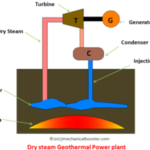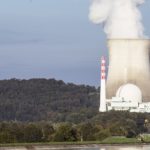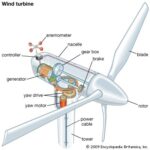Introduction
Coal may be black in color but it light’s up about 60% of our country. Coal has been a reliable source of energy for India from years. About 72% of the total coal extracted, goes into generating electricity in coal power plant and it is available in abundance at different locations of India. It is the most cost efficient source of producing power among all the fossil fuels. So knowing our dependence on coal, let’s just figure out what it takes to extract power from it?
For an instance it may look simple as burn coal, generate steam and run turbine, and there we go we get electricity. But it’s not that easy, the smoke coming out of the coal power plant can cause acid rain if we let it go untreated. Let’s figure it out in detail.
Main Components
The main components of a coal power Plant are:-
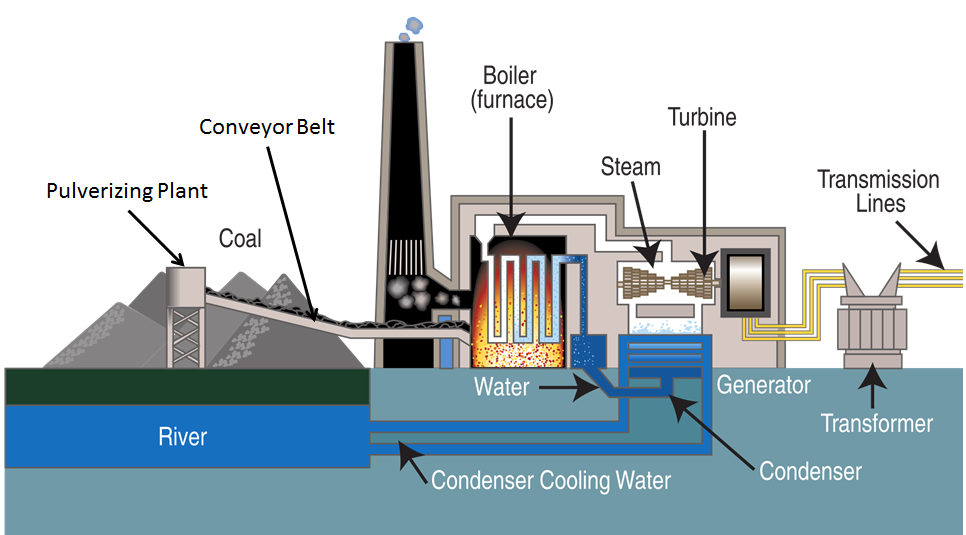
1. Conveyor Belt
The coal from the coal storage area is transported to the plant though a large conveyer belt. The load carrying capacity of this belt is very high as a very large amount of coal is required every day.
2. Pulverizing Plant
The coal so arrived by the conveyor cannot be used the way it is, it is first converted into powder form also known as pulverized coal. It is made to rotate in a cylindrical tank at high speed with lots of spherical steel balls and thus converted into powder. Pulverizing plant also has the storage for un-pulverized coal and can store upto 30 hours of coal feed.
3. Boiler
The pulverized coal is feed into the boiler through big fans blowing hot air. Boiler has many tubes filled with water, in these tubes water boils upto 1000 degree Fahrenheit and flames goes as high as 50 meters in the boiler
4. Turbine
High pressure steam from boiler at one thousand degree Fahrenheit and 3500 pounds per square inch of pressure is then feed to the steam turbine which converts its pressure energy into mechanical energy.
5. Generator
Generator uses the mechanical energy so generated by the turbines to generate electricity at considerably high voltage.
6. Condenser
Steam leaving the turbines is condensed in a condenser, to be pumped back to the boiler. Cold water from a water source (river) or expansion process is used to cool down the steam into water.
Also Read:
- Nuclear Power Plant – Working Principle, Advantages, Disadvantages with Diagram
- How Geothermal Power Plant Works – Explained?
- Solar Power Plant – Main Components, Working, Advantages and Disadvantages
Working of Coal Power Plant
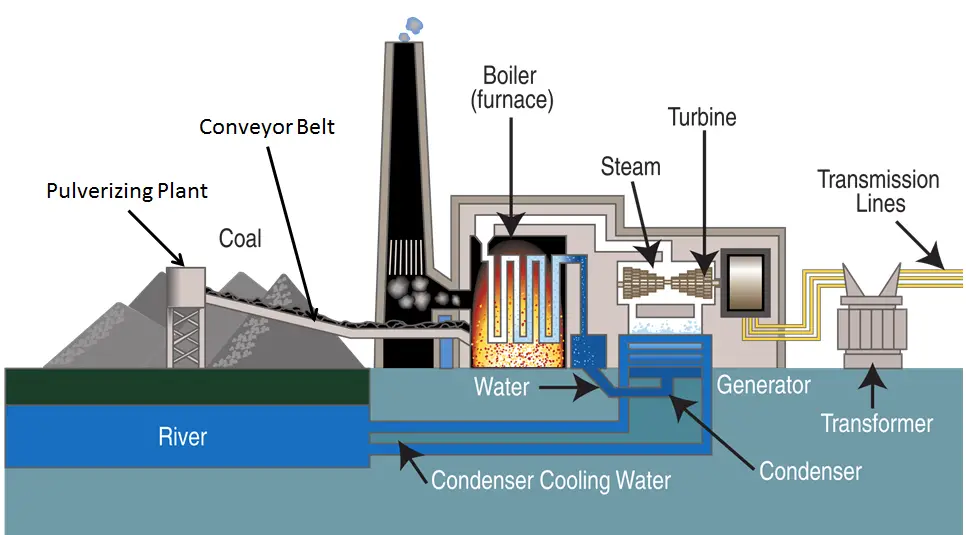
The working of a coal power plant start with the arrival of coal from the coal mines through trains. This coal is then taken to the pulverizing plant for converting it into powder form. The main reason behind converting it into powder is to increase its efficiency of burning, by increasing its exposed surface area that would come in contact with fire in burner, compared to solid coal.
This coal dust is then feed to the boiler through a blower fan; thermal energy released from this fuel is used to boil the water upto 1000 degree Fahrenheit, thus converting it into a high pressure steam which is transferred to the turbines. To take full advantage of pressure energy steam is made to expand one by one in 3 consecutive turbines. These turbines thus turn at really high rpm converting the pressure energy into mechanical energy. This energy is used to make electricity through generator. Due to such a high rpm the voltage output of the generator is about 24000 volts which is further stepped up to 40,000volts to be transferred to the nearer power grid through transmission cables.
Furthermore to extract heat from this steam, cool water from reservoir or river is pumped to the condenser and after heat exchange it is pumped back to water body. The temperature of this water is kept under safe limit so that it would not harm the aquatic life of the water body.
Also Read:
- What is Combined Cycle Power Plant? – Complete Explanation
- What are Different Types of Turbine?
- Advantages and Disadvantages of Coal
For the better explanation about the working of a coal power plant watch the video given below:
Pollution Control
The biggest drawback of the coal power plant is its fly ash content and release of sulphur-dioxide during burning of coal. All the plants producing electricity from coal are always under a check of the agencies concerned with the environment pollution. Also there is always a pressure on developing countries that they should keep their pollution level under control.
The fly ash in the smoke is removed by a mechanical process where as the sulphur-dioxide is removed by reaction with lime thus converting it into gypsum, which can be used in agricultural fields and has many other applications. The whole process takes place in a scrubber which is located between the boiler and chimney. Lime and water mixture is sprayed on the smoke coming from boiler thus minimizing the fly ash content going in air up-to one percent and reducing sulphur-dioxide content upto 93%. Precipitated fly ash can also be used in making concrete and other anti-skid road materials.
In some coal power plants nitrogen dioxide is also removed from the smoke. To remove nitrogen-dioxide it is passed through a catalytic convertor as in cars. Catalytic convertor consists of layers of ammonia. When nitrogen-dioxide is passed through these layers it reacts with ammonia and gets converted into nitrogen and water. Nitrogen is released into atmosphere, as the air we breathe contains 71% of nitrogen content, so it’s quite safe.
Advantages
- It is one of the most reliable sources of energy, considering other power plants which depends upon weather conditions like wind power plant and hydro power plant.
- It is available in abundance, so there will not be any halt in the production in the coming years.
- Considering India, this energy production means is providing employment to a large fraction of population.
- It is the cheapest source of energy available to produce electricity for good economical growth of country.
- Its end products like gypsum and precipitated ash could be used in many applications.
Disadvantages
- It pollutes the environment by releasing the harmful gases like sulphur-dioxide and nitrogen-dioxide.
- These gases have harmful greenhouse effects, which is the most dangerous thing, considering current environmental conditions.
- The carbon content coming out of chimney in the form of fly ash pollutes the environment in the most adverse way.
- Coal mines make people leave their homes, as it’s not safe to live over an area having mines underneath.
Application
- Coal power plant produces a large amount of electricity, for our homes, hospitals, industries, schools etc.
- Coal has been used as a fuel source for locomotives for years.
In this article you have learnt about coal power plant – working, main components, layout, advantages and disadvantages with application. You have also seen the working video tutorial of how it works. If you like this post than don’t forget to like and share it on social networks like Facebook, Google+ etc to educate others.

